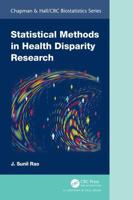Publisher's Synopsis
The disease that came to be called acquired immunodeficiency syndrome (AIDS) was first identified in the summer of 1981. By that time, nearly 100,000 persons in the United States may have been infected with human immunodeficiency virus (HIV). By the time the routes of transmission were clearly identified and HIV was established as the cause of AIDS in 1983, over 300,000 people may have been infected. That number has continued to increase, with approximately 1,000,000 Americans believed to be infected in 1991. The epidemic is of great public health concern because HlV is infectious, causes severe morbidity and death in most if not all of those infected, and often occurs in relatively young persons. In addition, the cost of medical care for a person with HIV disease is high, and the medical care needs of HIV-infected persons place a severe burden on the medical care systems in many areas. Understanding and controlling the HIV epidemic is a particularly difficult challenge. The long and variable period between HIV infection and clinical disease makes it difficult both to forecast the future magnitude of the epidemic, which is important for health care planning, and to estimate the number infected in the last several years, which is important for monitoring the current status of the epidemic.












